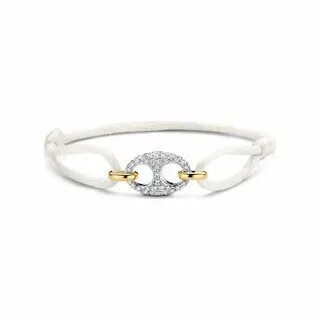Why Bracelet Weight Matters More Than You Think
When choosing a Milano bracelet, most people focus on design or price. However, the weight of the bracelet is equally important and influences both comfort and durability. Heavier bracelets often feel more luxurious, while lighter ones may be more practical for daily use. Whether you prefer gold or stainless steel, understanding weight can help you make a better decision that matches your style and lifestyle.
What Defines a Milano Bracelet?
A Milano bracelet is known for its intricate mesh or rope-like design, inspired by classic Italian craftsmanship. It’s often elegant, minimalist, and ideal for both casual and formal settings. These bracelets come in different metals, most commonly gold and stainless steel. Each material contributes significantly to the bracelet’s overall weight and feel on your wrist.
Weight Comparison: Gold vs. Stainless Steel
Choosing between a gold and a stainless steel Milano bracelet often comes down to their weight differences. Here’s a breakdown:
Gold Milano Bracelets
- Density: Gold is a dense metal. 24K gold has a density of around 19.3 g/cm³.
- Feel: Heavier on the wrist, offering a premium, high-end feel.
- Weight Range: Depending on thickness and length, a gold Milano bracelet can weigh anywhere from 15g to over 40g.
- Cost Implication: Heavier gold means higher cost due to its precious metal value.
Stainless Steel Milano Bracelets
- Density: Stainless steel has a density of approximately 8 g/cm³.
- Feel: Lighter and more practical for everyday wear.
- Weight Range: Typically 10g to 25g, depending on design.
- Cost Efficiency: Offers the Milano bracelet aesthetic at a much more affordable weight-to-price ratio.
Durability vs. Comfort: How Weight Impacts Wearability
A Milano bracelet made of gold might look stunning, but it’s heavier and can sometimes feel bulky, especially in warmer climates. Stainless steel, while lighter, is less likely to cause wrist fatigue and is often preferred by those who wear bracelets for long hours or daily.
For people with smaller wrists or those sensitive to weight, stainless steel versions provide the same style without the strain. On the other hand, gold Milano bracelets are ideal for those looking to invest in luxury and longevity.
Size and Thickness: Key Players in Weight
Besides metal type, the size and thickness of the Milano bracelet greatly impact its overall weight.
- Narrow Bracelets (2mm–4mm): Usually lighter and more delicate. Ideal for stacking or pairing.
- Medium Bracelets (5mm–7mm): Balanced in both weight and visual presence.
- Thick Bracelets (8mm and above): Heavier, more noticeable, and usually worn as standalone pieces.
A 6mm gold Milano bracelet might weigh almost double compared to a stainless steel one of the same size. Always check the gram weight in product descriptions if shopping online.
Men’s vs. Women’s Styles: Weight Differences
While Milano bracelets are considered unisex, men’s styles tend to be wider and heavier. Here’s what to expect:
- Men’s Gold Milano Bracelets: 25g–45g
- Women’s Gold Milano Bracelets: 15g–30g
- Men’s Stainless Steel Bracelets: 15g–25g
- Women’s Stainless Steel Bracelets: 10g–18g
These are just averages, but they show the general trend. Men’s versions are typically thicker and longer, which adds to the overall weight.
Weight and Pricing: A Practical Guide
When shopping for a Milano bracelet, weight plays a role not only in comfort but also in price. Gold is priced per gram. A heavier bracelet means a higher cost. Stainless steel, though more affordable, offers value in terms of durability and aesthetics without breaking the bank.
For example:
- 18K Gold Milano Bracelet, 20g: ~$1,200–$1,800
- Stainless Steel Milano Bracelet, 20g: ~$50–$150
If you’re looking for investment, gold is the better choice. For budget-conscious buyers who still want style and reliability, stainless steel wins.
Real-World Weight Examples for Buyers
To help you understand what different weights feel like, here are real-world comparisons:
- 10g Bracelet: Feels like a few coins in your hand; very light.
- 20g Bracelet: Noticeable but still comfortable for everyday wear.
- 35g Bracelet: Hefty and best reserved for occasional or statement wear.
Use this mental scale when browsing or testing bracelets at a store.
Which One Should You Choose?
There’s no one-size-fits-all answer, but here’s a quick decision guide:
Go for Gold If You:
- Want a long-term investment piece
- Prefer the premium weight and feel
- Don’t mind the extra cost and maintenance
- Plan to wear it for special occasions
Choose Stainless Steel If You:
- Prefer a lightweight option
- Need something durable for daily use
- Are shopping on a budget
- Want a modern or minimalist aesthetic
Many buyers end up owning both types: gold for events, stainless steel for everyday elegance.
Care Tips Based on Bracelet Weight
Heavier bracelets, particularly in gold, require more careful handling and storage to avoid deformation or scratches. Stainless steel versions are more forgiving but should still be cleaned regularly.
- For Gold: Store flat in a velvet pouch. Clean with a soft cloth and gentle soap.
- For Stainless Steel: Use a microfiber cloth to avoid micro-scratches. No special storage needed.
Weighty bracelets can also put more stress on clasps and links, so check your bracelet regularly if it’s on the heavier side.
Final Thoughts: Making an Informed Purchase
Selecting the right Milano bracelet involves more than just choosing a pretty design. Weight plays a key role in determining comfort, appearance, and cost. By understanding how gold and



